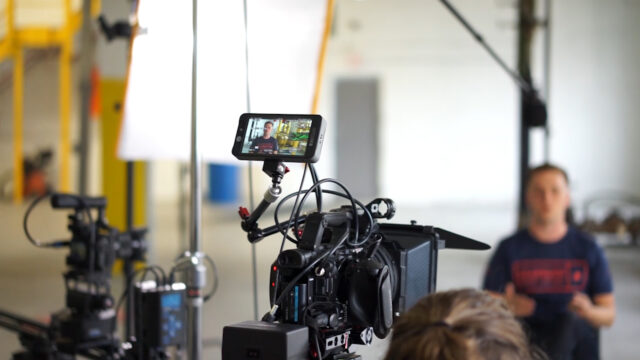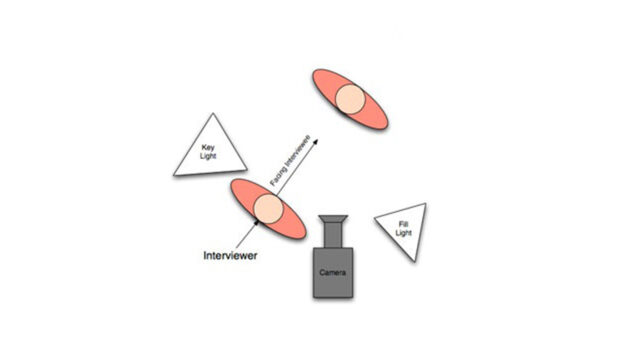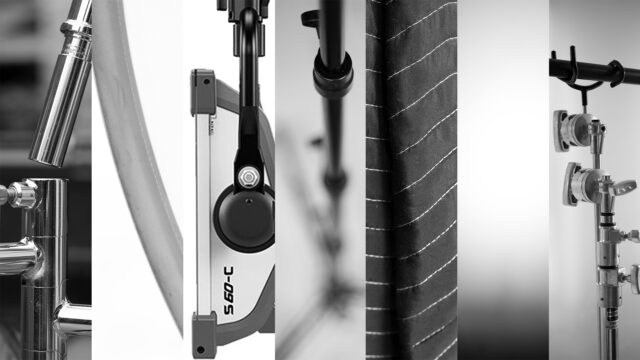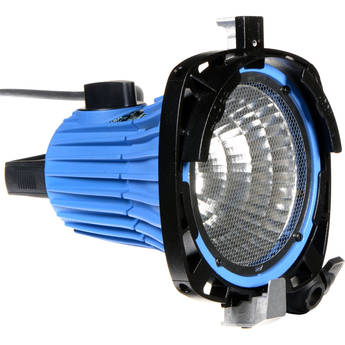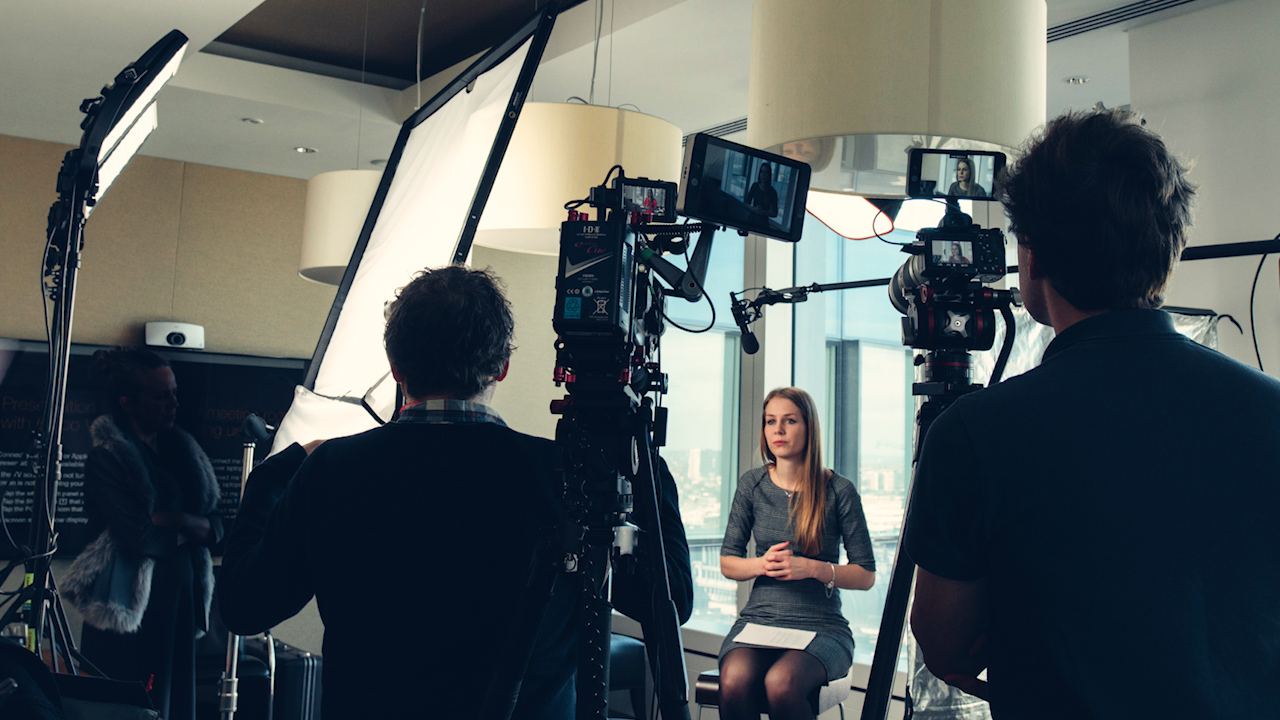
Virtually every cinematographer spends a period of their career booking loads of video interviews. Having the right tools for this job is essential. Here’s my take on the most useful accessories for this kind of work and, more importantly, some tips for using them.
The basics of shooting a video interview
Any good discussion of the best equipment for video interviews has to be clearly focused on what we are trying to achieve. A skilled cinematographer should never be satisfied with received methods alone, but a brief review of classical interview composition will help orient us in this creative task and guide us toward selecting a good, versatile equipment set.The traditional video interview is a medium shot of a single speaker looking just to the side of the camera lens. If the speaker is looking to the left of the lens (as in the above example), she should be positioned somewhere in the left half of the frame.
The key light source, today almost always a soft light, emanates from this same “broad side,” to the left (in this example) of the speaker’s line of sight. Depending on the mood of the scene and the photographic goals, the darker side of the subject is gently filled, in varying degrees, by a secondary light source, often a reflector.
Subtle interest can be created in the background with a carefully placed light fixture or well-managed natural light.
For an in-depth discussion of lighting techniques for video interviews, take a look back at Tim Fok’s excellent guide from last year.
7 Tools to Shoot Stunning Video Interviews:
So you have a basic video interview setup: a camera kit, a boom mic, ideally a lapel mic as well, and a good way to record the signals from these microphones, either in the camera or via an external recorder. What other tools do you need to compose an impressive interview shot?
1. Key Light
In today’s exciting stream of ever-improving LED fixtures, it is easy to forget the virtues of simple, affordable tungsten lights. For those of us who prefer to own our own equipment and are on a tighter budget, these workhorses can still be very useful.
The Arrilite 750 uses a refined reflector design to maximize its output, and its included Chimera-compatible speed ring makes it a good match for a large softbox. It will often be useful to convert the temperature of tungsten lights to daylight, so remember to have a roll or CTB (Color Temperature Blue) on hand.
Additionally, while it takes a bit more work to soften its light, a simple, open-faced lamp is a very flexible tool, and can easily be used for dramatic, stage-like lighting when needed. In a time when soft light is too quickly taken as a given, rather than a creative choice, it is worthwhile to surround oneself with flexible tools that resist specialization and repetition.
2. Diffusion Material
Softening light is a subtle art. Whether you are using a softbox or not, at least one roll of good diffusion material will allow you to further adjust the qualities of your key light. The angle, distance, and layering of this diffusion material will all produce subtle changes in the quality of light. A large, full roll of diffusion will equip you for interviews and many other lighting scenarios. Numerous qualities and weights of diffusion are available, but Rosco E-Colour #401 Light Rolux is a versatile starting point as it is gentle and relatively soft, but can be layered to produce a more aggressive softening effect.
3. Versatile Reflector
Next, a good white reflection surface will help fill in the shadows cast by the key light and create a pleasing smoothness. In a pinch, foam core from a craft store will do quite well, but the compact, portable, and durable Westcott 5-in-1 Reflector Disc is a more convenient and durable solution.
Reflectors are no more complex than neutral, white boards of one kind or another. You may prefer a home-brewed solution, or if easy C-Stand mounting is more important than a quickly collapsible product, perhaps you prefer a silk on a solid steel frame. Whatever your style, a good reflector should never be absent on almost any video shoot.
A quick note about foam core: while this is generally not a problem, if you are experiencing an acoustic reflection that you can’t track down, a closely-placed piece of foam core may be the culprit. To demonstrate this, talk directly into a piece of foam core and listen to the change in your voice. This effect will be far less pronounced with a thin fabric reflector.
4. Boom Pole Holder
The K-Tek Airo ABH1 Boompole Holder is an excellent, simply designed tool for placing your boom pole right where you want it using a C-Stand. These holders are simple to use, but it helps to know the following technique: because it’s difficult to adjust the angle of the boom pole once it is set up, start by setting the C-Stand at a nice height. Next, position your boom mic so that it is about three feet too low. Then use only the C-Stand riser to lift the mic into position. I like to place the C-Stand high enough to allow cast and crew to pass freely beneath the boom pole.
5. Sound Blanket
Audio is the life-blood of an interview, and dampening the worst acoustic reflections will generally do far more for your sound quality than a new high-end microphone. A Matthews Sound Blanket will come in handy here, as well as help you pack your gear up safely.
Using it is simple. You need to identify the second arrival of sound waves — the closest flat surface that is indirectly reflecting sound from the subject’s mouth into the microphone. We only want sound waves that move directly from the subject to the microphone, so covering this surface (often the floor, or a nearby wall) with this blanket, folded up thickly, can do wonders.
6. Mini Light Stand
It’s always good to have at least one compact light stand lying around. The Manfrotto Alu Mini Compact Air-Cushioned Stand is a good, reliable stand for the price. You never know when it will come in handy to hold a small background light, a pop-up reflector, etc.
7. C-Stands
Lastly, putting all of these tools right where you want them with ease and professionalism is essential. It’s important to have plenty of solid C-Stands available on set.
The Matthews Century C+ Stand is an excellent option because it is light, very strong, and its base can be removed, allowing for easier transportation, especially if you plan to carry your gear in a personal vehicle.
Conclusion
Video interviews are relatively simple, but extremely important for any cinematographer to master. If put to good creative use, the right tools can help you capture these human encounters in an intriguing and masterful way.
Furthermore, perfecting your interview setup is an excellent way to prepare for narrative cinematography, as many of the same principles of lighting and composition are quite useful in the dramatic medium shot.
What does your interview kit look like? More importantly, what essential gear has most helped you master the art of the interview shot? Let us and other readers know by commenting below!
